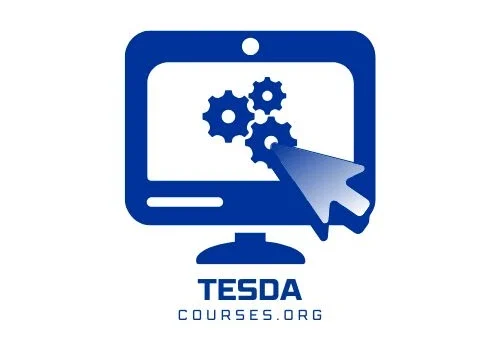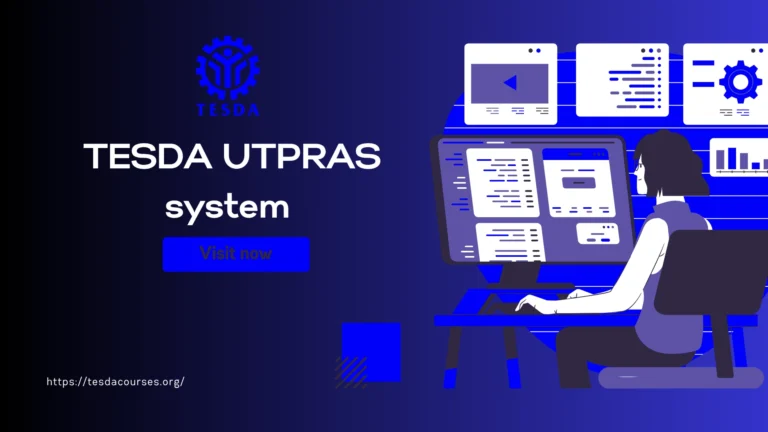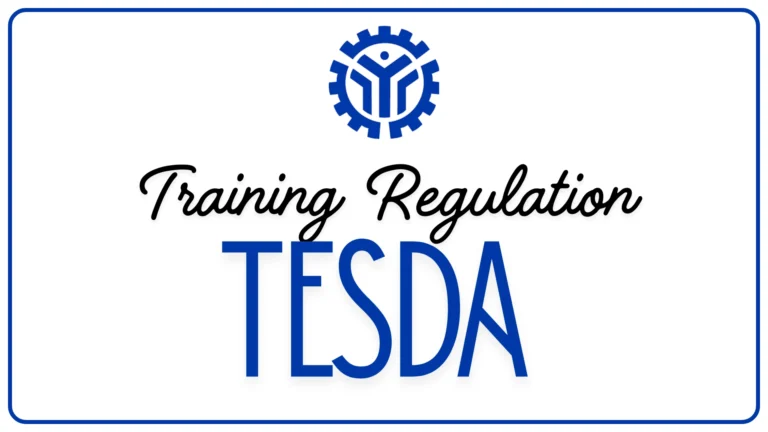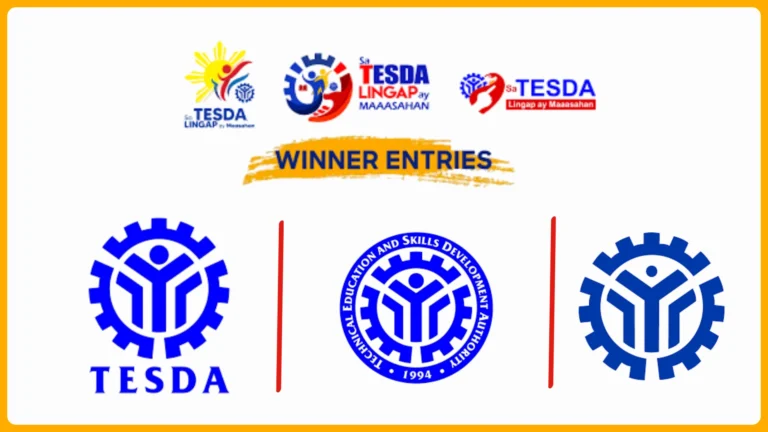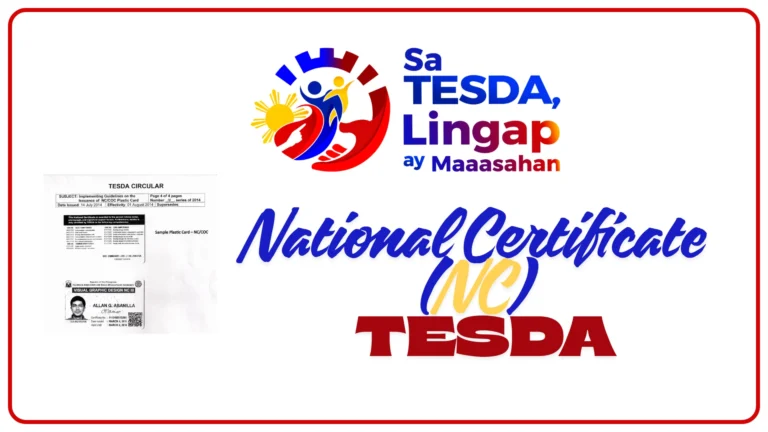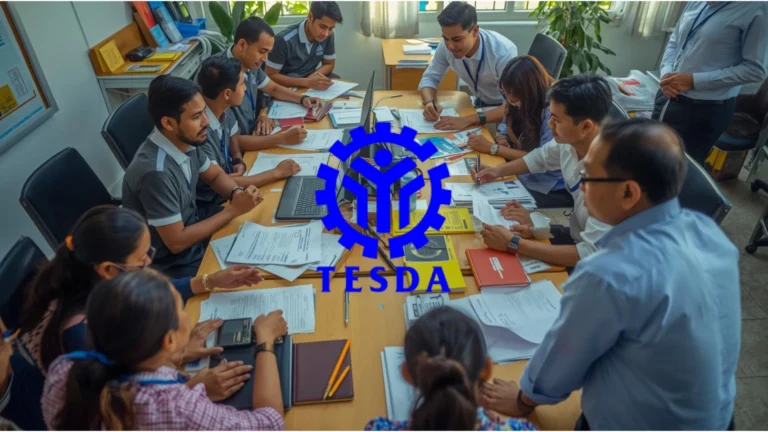The Ultimate Guide to TESDA Laboratory and Equipment Standards: Everything You Need to Know
Look, I’ll be honest with you—when I first heard about TESDA laboratory standards, my eyes glazed over faster than a donut in a bakery window. Standards? Equipment specifications? Compliance checklists? It sounded about as exciting as watching paint dry in slow motion.
But here’s the thing: if you’re an international student eyeing vocational training in the Philippines, or if you’re involved with a TVET (Technical and Vocational Education and Training) institution, understanding TESDA Laboratory and Equipment Standards isn’t just bureaucratic box-ticking. It’s actually your ticket to quality education, workplace safety, and credentials that actually mean something in the real world.
Think of it this way—would you trust a chef trained in a kitchen without proper equipment? Would you let a mechanic who learned on broken tools anywhere near your car? Exactly. The standards exist because they matter, and I’m here to break them down in a way that won’t put you to sleep.
What Exactly Are TESDA Laboratory and Equipment Standards?
Let’s start with the basics. TESDA—that’s the Technical Education and Skills Development Authority—is the Philippine government agency that handles everything related to technical-vocational education. They’re basically the quality control gatekeepers for vocational training.
Now, TESDA laboratory and equipment standards are the detailed guidelines that training centers must follow to get (and keep) their accreditation. These standards cover everything from the square footage of your workshop to the calibration of your measuring instruments. They’re comprehensive, they’re specific, and yes, they’re occasionally tedious—but they’re also what separates legitimate training from expensive theater.
The beauty of these standards? They ensure that whether you’re learning welding in Manila or culinary arts in Cebu, you’re getting consistent, quality instruction with equipment that actually works.
Why Should International Students Care About These Standards?
Here’s a question for you: would you pay thousands of dollars to learn on outdated equipment in substandard facilities? I didn’t think so.
As an international student, you’re making a significant investment in your education. Understanding TESDA laboratory requirements helps you separate the wheat from the chaff when choosing a training center. Accredited facilities that meet TESDA standards offer:
- Quality assurance: You’re learning on industry-standard equipment
- Safety guarantees: Proper ventilation, electrical systems, and emergency protocols
- Credential credibility: Your certificate actually means something to employers
- Better learning outcomes: Well-maintained equipment = better hands-on experience
I’ve seen too many students rush into programs without checking accreditation, only to realize later that their certificate isn’t recognized by employers. Don’t be that person.
The Core Components of TESDA Lab Equipment Standards
Let’s dig into what makes a laboratory TESDA-compliant. This isn’t rocket science, but it is thorough.
Equipment Specifications and Quality
TESDA equipment specifications aren’t arbitrary. They’re based on industry standards and actual workplace requirements. This means:
- Equipment must match what’s used in actual professional settings
- Tools and instruments need regular calibration and maintenance
- Everything must meet safety certifications
- There’s a minimum quantity of equipment per student ratio
For example, in a welding program, you can’t just have one welding machine for twenty students. The standards specify how many workstations you need based on class size. Smart, right?
Laboratory Setup Requirements
Setting up a TESDA-accredited laboratory isn’t like arranging your bedroom furniture. There are specific TESDA laboratory setup requirements that cover:
Space and Layout:
- Minimum floor area per program
- Proper spacing between workstations
- Clear pathways and emergency exits
- Designated storage areas
Utilities and Infrastructure:
- Adequate electrical capacity and proper wiring
- Water supply and drainage systems
- Proper lighting (natural and artificial)
- Ventilation and air quality control
Safety Features:
- Fire suppression systems
- Emergency shut-off switches
- First aid stations
- Personal protective equipment storage.
TESDA Courses for Abroad: The Ultimate Guide to In-Demand NC II & NC III Certifications
TESDA Laboratory Safety Standards: Non-Negotiables
Safety isn’t sexy, but injuries are even less appealing. TESDA laboratory safety standards are probably the most critical part of the whole framework.
Environmental Safety
TESDA laboratory environmental standards ensure that you’re not breathing in toxic fumes or working in hazardous conditions. This includes:
- Ventilation requirements: Proper air exchange rates, especially for programs involving chemicals or fumes
- Temperature control: Some equipment needs specific temperature ranges to function properly
- Lighting standards: Adequate illumination to prevent accidents and eye strain
- Noise control: In programs with loud equipment, sound dampening measures
Equipment Safety Protocols
Every piece of equipment comes with its own safety requirements. TESDA laboratory equipment safety guidelines mandate:
- Regular safety inspections
- Maintenance schedules
- Emergency shutdown procedures
- Proper guarding and protective barriers
- Clear safety signage and instructions
I once visited a training center where the equipment guards had been removed “for easier access.” Yeah, easier access to the emergency room. Don’t compromise on safety features—they’re there for a reason.
The TESDA Laboratory Accreditation Process
So how does a training center actually prove they meet these standards? Enter the TESDA laboratory accreditation process.
The Accreditation Checklist
The TESDA laboratory accreditation checklist is extensive. Here’s what inspectors look for:
Facility Requirements:
- Proper building permits and occupancy certificates
- Adequate space allocation per program
- Compliant infrastructure and utilities
- Safe and accessible location
Equipment Compliance:
- Complete equipment inventory matching program requirements
- Proof of equipment functionality and maintenance
- Calibration certificates for measurement instruments
- Safety features and guards in place
Documentation:
- Equipment manuals and specifications
- Maintenance logs and schedules
- Safety procedures and protocols
- Instructor qualifications
Quality Management:
- Standard operating procedures
- Quality control measures
- Continuous improvement systems
The Inspection Process
TESDA lab inspection standards are rigorous. Inspectors don’t just glance around and nod approvingly. They:
- Review all documentation thoroughly
- Physically inspect every piece of equipment
- Test safety systems and emergency protocols
- Verify calibration and maintenance records
- Interview staff and instructors
- Observe actual training sessions
Pro tip: If you’re evaluating a training center, ask when their last inspection was and what the results were. Accredited centers should be proud to share this information.
The Ultimate Guide to TESDA Training Centers, Courses, and Contact Information Nationwide
TESDA Equipment Maintenance Standards: Keeping Things Running
Here’s something nobody tells you about training equipment: it breaks. A lot. That’s why TESDA equipment maintenance standards are crucial.
Preventive Maintenance
The best maintenance is the kind that prevents problems before they start. TESDA equipment maintenance standards require:
- Scheduled maintenance: Regular servicing based on manufacturer recommendations and usage intensity
- Daily inspections: Pre-use checks by instructors and students
- Lubrication and cleaning: Keeping equipment in optimal condition
- Parts replacement: Proactive replacement of wear items before failure
Maintenance Documentation
A TESDA laboratory maintenance checklist should track:
| Maintenance Task | Frequency | Responsible Person | Documentation Required |
|---|---|---|---|
| Visual inspection | Daily | Instructor | Daily log |
| Functional testing | Weekly | Lab technician | Test results |
| Preventive maintenance | Monthly | Qualified technician | Service report |
| Calibration | Quarterly/Annually | Certified calibrator | Calibration certificate |
| Safety system testing | Quarterly | Safety officer | Test records |
Think of it like car maintenance—skip the oil changes, and eventually, you’re walking.
Equipment Calibration: The Precision Factor
Let’s talk about TESDA lab equipment calibration standards for a moment. This is where things get precise—literally.
Why Calibration Matters
Imagine learning to be a machinist on a micrometer that’s off by half a millimeter. You’d produce parts that don’t fit, waste materials, and probably get fired from your first job. Calibration ensures that measurement tools are accurate.
TESDA measurement equipment standards require:
- Regular calibration by certified technicians
- Calibration certificates with traceability
- Documented calibration schedules
- Re-calibration after repairs or damage
- Clear marking of calibration status and due dates
The Calibration Process
A proper TESDA laboratory equipment calibration guide includes:
- Baseline establishment: Comparing against known standards
- Adjustment: Fine-tuning to match specifications
- Verification: Confirming accuracy after adjustment
- Documentation: Recording results and issuing certificates
- Labeling: Marking equipment with calibration date and next due date
The TESDA Laboratory Standards Manual: Your Bible
The TESDA Laboratory Standards Manual is the comprehensive document that brings all these requirements together. It’s dense, it’s detailed, and it’s absolutely essential.
What’s Inside
This manual covers:
- Detailed specifications for each TVET program
- Minimum equipment lists and quantities
- Space and facility requirements
- Safety and environmental standards
- Quality assurance procedures
- Assessment and evaluation criteria
The Ultimate Guide to TESDA Requirements: Enrollment, Certification, and Center Accreditation
How to Use It
Whether you’re a student, administrator, or instructor:
- Students: Use it to verify your training center meets standards
- Administrators: Follow it religiously for accreditation and compliance
- Instructors: Reference it for equipment requirements and safety protocols
The TESDA laboratory standards PDF version is available for download from TESDA’s official website—bookmark it, because you’ll reference it often.
Specific Standards by Program Type
Different programs have different requirements. Let’s look at some variations:
TESDA Electrical Equipment Standards
Programs involving electricity have heightened safety requirements:
- Insulated work surfaces
- Ground fault circuit interrupters (GFCI)
- Lockout/tagout procedures
- Proper cable management and routing
- Arc flash protection equipment
- Isolated power supplies for sensitive equipment
Laboratory Design Standards
TESDA laboratory design standards vary by program:
Culinary Programs:
- Commercial-grade kitchen equipment
- Proper food storage facilities
- Adequate sink and washing stations
- Grease trap systems
- Proper ventilation and fire suppression
Automotive Programs:
- Vehicle lifts and hoists
- Diagnostic equipment
- Tool storage and organization
- Proper waste oil disposal
- Adequate bay spacing
Health Programs:
- Medical-grade equipment
- Sterilization facilities
- Proper lighting and cleanliness
- Biohazard disposal systems
- Patient privacy accommodations
Equipment Procurement: Getting It Right from the Start
Here’s where many training centers stumble—buying equipment that doesn’t meet standards. TESDA equipment procurement standards exist to prevent this.
The Procurement Process
- Needs assessment: Match equipment to program requirements
- Specification matching: Ensure equipment meets TESDA specifications
- Supplier verification: Work with reputable suppliers
- Quality verification: Inspect equipment upon delivery
- Installation and commissioning: Proper setup and testing
- Documentation: Maintain all purchase and specification records
Common Procurement Mistakes
I’ve seen training centers make these errors repeatedly:
- Buying cheaper alternatives that don’t meet specifications
- Skipping calibration verification
- Ignoring after-sales service and warranty
- Failing to verify compatibility with existing systems
- Not planning for spare parts and consumables
Don’t be penny-wise and pound-foolish. The right equipment costs more upfront but saves money and headaches long-term.
Equipment Inventory Management
A comprehensive TESDA laboratory equipment inventory system isn’t optional—it’s required.
What to Track
Your inventory should include:
| Information Category | Details Required |
|---|---|
| Equipment identification | Name, model, serial number, unique ID |
| Specifications | Technical specs, capacity, accuracy |
| Purchase information | Date, supplier, cost, warranty |
| Location | Building, room, specific location |
| Status | Operational, under repair, decommissioned |
| Maintenance | Service history, next due date |
| Calibration | Last calibration, next due, certificate number |
| Assignment | Responsible person, program usage |
Inventory Management Best Practices
- Regular audits: Physical verification of equipment location and condition
- Digital tracking: Use inventory management software
- Clear labeling: Barcode or RFID tags for easy identification
- Usage logs: Track equipment utilization and issues
- Lifecycle planning: Plan for eventual replacement
Quality Assurance and Continuous Improvement
TESDA laboratory quality standards aren’t a one-time achievement—they’re an ongoing commitment.
Quality Management System
A robust quality system includes:
- Standard operating procedures: Documented processes for everything
- Quality metrics: Measurable indicators of performance
- Regular audits: Internal and external reviews
- Feedback mechanisms: Input from students, instructors, and industry partners
- Corrective actions: Systems for addressing deficiencies
Continuous Improvement
The best training centers don’t just meet standards—they exceed them. This means:
- Staying updated on industry trends
- Upgrading equipment proactively
- Investing in staff training
- Seeking student and employer feedback
- Benchmarking against top performers
Common Compliance Challenges and Solutions
Let me share some real-world challenges I’ve encountered:
Challenge 1: Budget Constraints
Solution: Prioritize critical equipment, explore leasing options, seek partnerships with industry, apply for grants and subsidies, phase equipment purchases strategically.
Challenge 2: Space Limitations
Solution: Optimize layout design, consider multi-use spaces, explore satellite facilities, implement scheduling to maximize utilization, invest in space-efficient equipment.
Challenge 3: Keeping Up with Technology
Solution: Partner with equipment manufacturers, establish industry advisory boards, prioritize adaptable and upgradeable equipment, plan for regular technology refresh cycles.
Challenge 4: Maintenance and Calibration Costs
Solution: Train in-house maintenance staff, negotiate service contracts, join procurement cooperatives, implement preventive maintenance to reduce breakdowns, budget adequately for ongoing costs.
For International Students: What to Look For
When evaluating TVET programs in the Philippines, here’s your checklist:
Accreditation Verification:
- Current TESDA accreditation certificate
- Specific programs you’re interested in are accredited
- Recent inspection reports are positive
- No pending compliance issues
Facility Tour:
- Request a comprehensive facility tour
- Observe equipment condition and cleanliness
- Check maintenance logs and calibration certificates
- Note student-to-equipment ratios
- Assess safety measures and signage
Questions to Ask:
- When was the last TESDA inspection?
- What equipment has been added or upgraded recently?
- What’s the equipment replacement schedule?
- How often is equipment maintained and calibrated?
- What safety incidents have occurred, and how were they addressed?
Red Flags:
- Reluctance to show facilities or documentation
- Outdated or non-functional equipment
- Poor maintenance and housekeeping
- Overcrowded labs with insufficient equipment
- Missing safety features or protocols
The Complete Guide to TESDA Scholarships: How to Get Your Allowance and Train for Free
The Future of TESDA Laboratory Standards
Standards evolve with technology and industry needs. Here’s what’s coming:
Emerging Trends
- Industry 4.0 integration: Smart equipment, IoT sensors, data analytics
- Virtual and augmented reality: Supplementing hands-on training with simulation
- Green standards: Environmental sustainability in equipment and operations
- Modular and flexible spaces: Adaptable labs for changing program needs
- Enhanced safety technology: Advanced monitoring and prevention systems
Staying Current
To keep pace with changes:
- Subscribe to TESDA updates and bulletins
- Attend industry conferences and workshops
- Participate in TESDA consultations on standard revisions
- Network with other accredited training centers
- Engage with industry partners on emerging needs
Practical Tips for Students and Training Centers
For Students
Before Enrollment:
- Research TESDA accreditation thoroughly
- Visit facilities in person if possible
- Compare multiple training centers
- Read reviews and talk to alumni
- Verify specific program accreditation, not just institutional
During Training:
- Report equipment problems immediately
- Follow safety protocols religiously
- Take care of equipment—you’re learning professional habits
- Ask questions about equipment operation and maintenance
- Document your hands-on experience for your portfolio
For Training Centers
Achieving Compliance:
- Start with a gap analysis against TESDA standards
- Develop a detailed action plan with timelines
- Budget adequately for equipment and infrastructure
- Engage consultants if needed
- Build relationships with TESDA regional offices
Maintaining Compliance:
- Implement robust documentation systems
- Schedule regular internal audits
- Stay ahead of maintenance and calibration
- Invest in staff training
- Treat compliance as ongoing, not one-time
Resources and Support
Official TESDA Resources
- TESDA official website: Current standards and guidelines
- Regional TESDA offices: Local support and guidance
- TESDA Online Learning Platform: Training materials and resources
- TESDA hotline: Questions and clarifications
Additional Support
- Industry associations: Sector-specific guidance
- Equipment suppliers: Technical specifications and support
- Calibration laboratories: Certification and services
- Consultants: Specialized accreditation support
Final Thoughts: Standards That Matter
Look, I get it—standards and compliance sound boring. But here’s what they really represent: your future career, your safety, and the credibility of your qualifications.
TESDA laboratory and equipment standards aren’t bureaucratic obstacles; they’re quality guarantees. They ensure that when you complete your training, you actually know what you’re doing. They protect you from unsafe conditions. They give employers confidence in your skills.
For international students especially, these standards are your assurance that you’re getting what you paid for. In a world full of diploma mills and substandard programs, TESDA accreditation is a mark of legitimacy.
Whether you’re choosing a training program, managing a training center, or just curious about vocational education in the Philippines, understanding these standards empowers you to make informed decisions.
The technical and vocational education landscape is evolving rapidly. Technology advances, industries change, and job requirements shift. But the fundamental principle behind TESDA standards remains constant: quality education requires quality facilities and equipment.
So do your homework. Visit those facilities. Ask the tough questions. Check those maintenance logs. Verify that accreditation. Your education—and your career—deserves nothing less.
The Ultimate Guide to TESDA Free Courses Online: Certificates, Allowances, and How to Enroll ?
Take Action
For Prospective Students: Ready to pursue vocational training? Download the TESDA laboratory standards manual, create a facility evaluation checklist, and start visiting accredited training centers. Your future self will thank you.
For Training Centers: Need help achieving or maintaining accreditation? Contact your regional TESDA office, schedule a gap analysis, and start planning your compliance journey today.
For Everyone: Have questions about TESDA standards? Drop them in the comments below—I’d love to hear about your experiences with vocational training facilities, both good and bad. Let’s keep the conversation going and help each other navigate this important aspect of quality education.
Remember, quality training isn’t an accident—it’s a standard.
Word Count: ~3,500 words
Note: This guide is based on current TESDA standards and practices. Always verify with official TESDA sources for the most up-to-date requirements and guidelines.
